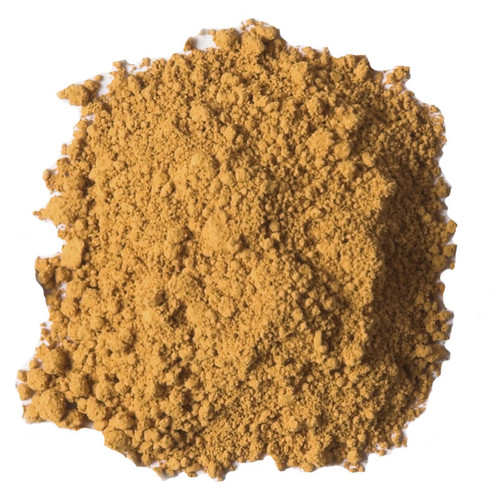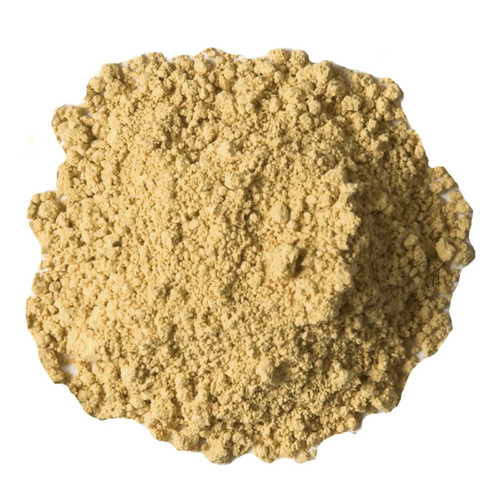Product Details
Usage List
- Acrylics
- Alcohols
- Calligraphy ink
- Candle overdipping
- Casein
- Clay paints and plasters
- Distemper
- Egg tempera
- Encaustic
- Epoxy resins
- Fabric: use in paints but not as dye
- Flour paints
- Fresco
- Glazes
- Glue paint
- Iconography
- Milk Paints
- Oil Mediums: moderately high oil absorption
- Oil paints
- Pastels
- Paste wax
- Plastic resins
- Polymer Clay
- Resins
- Shellac
- Soap
- Solvents
- Stains
- Temperas
- Water based Mediums
- Watercolor
- Waxes
Don’t see what you are looking for? Send us a question
Mixing Instructions
For liquid binders: Place desired amount of pigment in mixing vessel or on a palette. Add liquid slowly and work with palette knife or tool to create a smooth color paste or syrup. The liquid used may be either the binder itself or a compatible vehicle depending upon the chosen medium. To avoid flocculation, do not introduce pigments into a large volume of liquid all at once as this will cause micro clumping.
For dry binders such as plasters and cements: Pigment may be added into dry ingredients directly prior to mixing. If micro-bursting of particles appears in plasters, creating a color syrup may be necessary first.
Mixing tools: Artist mixing tools may include a palette with a palette knife, a mortar and pestle or a slab and muller. Which tool you use depends upon the amount mixed and the pigment’s need for mulling. Decorative binders may require the use of mechanical mixers to fully incorporate pigment.
Ratios: To be determined by individual binders and/or color result desired. Visit our How-To pages for in-depth recipes with suggested ratio's and detailed instructions.
What are Primaries?
All Artists and Decorators will find exciting colors to work with in the Primaries. With a wide selection, these will be modern colors as well as replacements for many toxic, traditional pigments. The Primaries Category is comprised of different pigment compositions. Most are composite colors that utilize a unique fusion of synthetics with 90 to 99% natural mineral ingredients. Like all of our pigments, they find use in many mediums. However, it is particularly important with these colors to check individual compatibility with your planned use. Some may have exceptions.
How Composite Colors Are Made
Our mission here at The Earth Pigments Company is to provide our customers with safe, non toxic art materials. There are ingenious ways the industry is creating these new pigments to meet the high standards artists and manufactures demand. We refer to them as Composite colors. Composite colors are two component pigments, a natural base and a color that either starts out as a dye or an Oxide pigment. The base may be magnesium or calcium and will comprise most of the composition, anywhere from 90 to 99%.
The process involves using heat and pressure to fuse the color component onto the natural base, thus creating a mineral based pigment. The manufacturing process is sustainable, environmentally friendly, and creates a very small amount of residual water. The colors created have an archival quality and UV rating for fine art materials. Not only does this technology open up a wide range of available colors, but it replaces many toxic or expensive traditional pigments and dyes.
Technical Data
| Category: | Primary |
| Country of Origin: | France |
| Composition: | An Azo Organic fixed on a mineral base. |
| Chemical Formula: | Y83, Y1 |
| Lightfastness: | Good |
| Particle size | 50 microns (325 Mesh) |
| Heat Stability: | Color Stable to 300° F |
| Packaging: | 100g in 4 oz recyclable plastic jar packed by weight. Some settling of contents may occur during shipment. 500g and above: double plastic bag |
| Notes: | Use care when handling any dry pigment. Avoid inhaling pigment dust. Our pigments are not sold for cosmetic, pharmaceutical, tattoo ink or food use. Since computer monitors, tablets and smartphones may differ in how they display colors, the actual pigment powders we sell may differ slightly from their product image as displayed on your device. We do not guarantee colors based on these images. |










